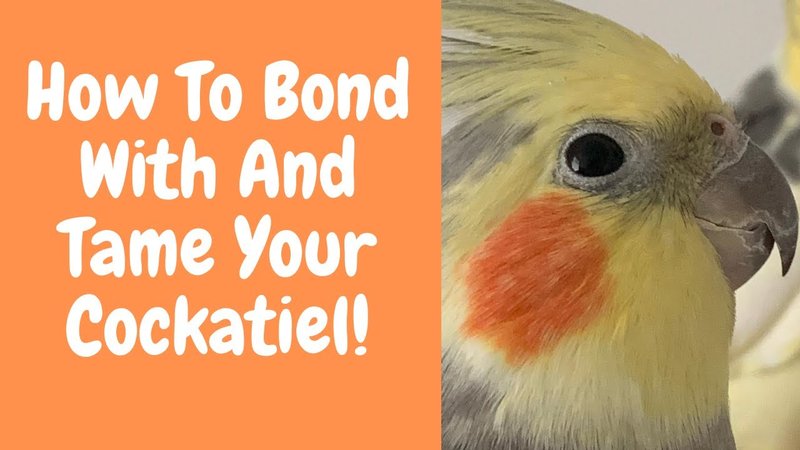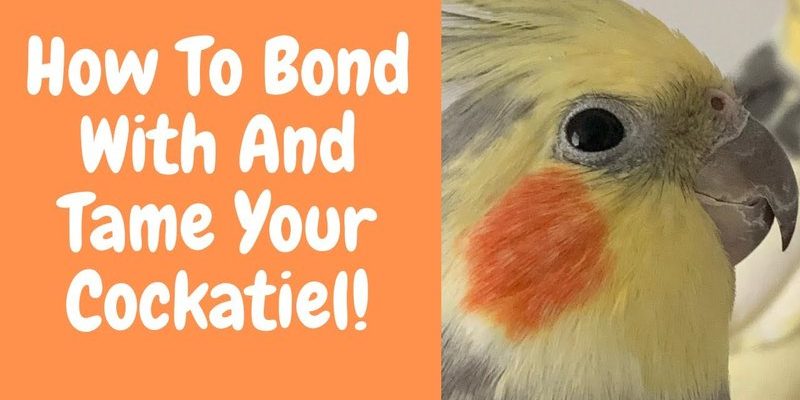
Imagine meeting a new friend. You wouldn’t rush in with hugs and high-fives, right? Instead, you’d take some time to chat, laugh, and understand each other’s vibes. That’s exactly what you’ll want to do with your cockatiel. With the right approach, you can create a loving bond that makes your bird feel safe, happy, and part of your family. So, let’s dive into the steps you can take to forge that special connection.
Understanding Your Cockatiel’s Nature
Before you can tame your cockatiel, it’s important to understand their natural behavior. Cockatiels are curious, social creatures. In the wild, they live in flocks, so they thrive on companionship and interaction. When you bring one into your home, you become its flock, and it’s crucial to recognize that they may take some time to adjust to their new environment.
When you first get your cockatiel, you might notice that it can be a bit shy or skittish. This is perfectly normal! Birds are often hesitant in new situations. It’s their way of protecting themselves. Their natural instinct is to be cautious, especially when they don’t know you yet.
You can help ease this transition by spending quiet time in the same room as your bird. Talk to them softly, read a book aloud, or just sit nearby. This will help your cockatiel get used to your presence and voice. Before long, they may start to feel more comfortable with you around.
Creating a Safe and Comfortable Space
A cozy and safe environment is essential for any cockatiel. You want to make sure your bird feels secure in its new home. Start by choosing a nice, spacious cage that allows your cockatiel to move around comfortably. Ideally, the cage should be tall enough for them to stretch their wings and wide enough to include some fun toys and a place to perch.
It’s also a good idea to place the cage in a room where your family spends time. Cockatiels love being part of the action! Just make sure it’s away from drafts, direct sunlight, and noisy appliances. You want your bird to feel like it’s part of the family but in a safe, comfortable area.
In addition to the cage, provide some basic toys to stimulate your bird cognitively and physically. Items like chew toys, bells, and ladders can keep them entertained and happy. The more comfortable they feel in their space, the easier it will be for you to build a bond.
Establishing Trust Through Routine
Building trust with your cockatiel is key. The best way to establish trust is through a consistent routine. Birds are creatures of habit, and having a daily schedule can make them feel more secure. This includes set feeding times, playtime, and interaction.
Start by feeding your cockatiel at the same time each day. You might consider hand-feeding your bird some seeds or treats. This simple action can create a powerful association between you and good things, helping them to trust you more quickly. If they get used to seeing you as the one who brings tasty snacks, they’ll be more likely to approach you willingly.
Also, try to spend a little bit of time with your cockatiel every day. Even if it’s just sitting near the cage and talking to them, maintaining that connection is vital. You might be surprised at how quickly they start responding to your presence!
Using Positive Reinforcement
Positive reinforcement is a great tool when it comes to taming your cockatiel. Birds respond well to rewards, so whenever your cockatiel does something you like—like stepping onto your finger or chirping happily—give them praise and a treat. Think of it as a little “thank you” that encourages them to repeat that behavior.
You might want to use a clicker or a specific word when giving them treats. The sound or word can become a cue for them. For example, if you say “good bird” every time they step up, they’ll start to recognize that as a positive sign.
However, remember to be patient. Some cockatiels may take longer than others to feel secure enough to engage with you. If they seem scared, don’t rush things. It’s all about building that bond naturally and allowing your bird to set the pace.
Gaining Your Cockatiel’s Confidence
As you build this relationship, there may come a time when your cockatiel is ready to leave its cage for some out-of-cage time. This step can be both exciting and daunting for you and your bird. Make sure to create a safe space for them to explore outside the cage, free from potential hazards like open windows, ceiling fans, or other pets.
Start by opening the cage door and letting them come out on their own when they’re ready. You can remain nearby to encourage them. If they have a favorite toy or treat, place that outside the cage to make the area more inviting. It’s a bit like giving them a friendly nudge to step outside their comfort zone.
Over time, they may start to come out more often, exploring their surroundings and spending time by you. Allow them the freedom to fly – but make sure to gently guide them back if they stray too far.
Engaging Through Play and Interaction
Once your cockatiel is comfortable coming out of its cage, it’s time to ramp up the fun! Playtime is an essential part of bonding. Cockatiels are affectionate and love to play, so providing a variety of interactive toys can be a game-changer.
You might want to try toys that encourage foraging, where your bird can “work” for their treats. This taps into their natural instincts and keeps their mind engaged. Simple things like crumpling paper to hide treats can lead to hours of entertainment.
Another fun way to bond is through singing or whistling. Cockatiels are excellent mimics and may start to mimic sounds they hear regularly. Try whistling a simple tune and see if your bird joins in! The shared experience will bring you closer together.
Recognizing Signs of Stress or Discontent
Being aware of your cockatiel’s body language is crucial. Just like a friend might show signs of discomfort, birds do too. If you see your cockatiel puffing up, avoiding eye contact, or making distressed sounds, it may be feeling stressed or scared.
Take these signs seriously. Ensure your bird has a quiet place to retreat if it needs a break. Sometimes, just stepping back and allowing them some alone time can help them recharge. Patience is key, and it’s all part of the journey to building trust.
If your cockatiel displays consistent signs of stress, consider re-evaluating its environment or the way you interact. Keep in mind that every bird is unique; some may take longer to bond than others, and that’s perfectly okay.
Continuing the Bonding Journey
Taming and bonding with your cockatiel is an ongoing process. It’s the little moments—like sharing a laugh or enjoying a sunny afternoon together—that will deepen your friendship. Commitment is essential. Continue to engage with your bird daily, always respecting its boundaries and preferences.
As time goes on, you may develop a special language or routine that’s unique to you and your cockatiel. Your bond might grow into a heartwarming partnership filled with chirps, cuddles, and lots of love. Embrace the journey, be patient, and enjoy every moment as your bond flourishes.
Bonding with a cockatiel is like planting a garden. With time, care, and a bit of trust, you’ll cultivate a beautiful friendship that brings joy to both your lives. So, take a deep breath, be yourself, and let the magic of your unique connection unfold!

